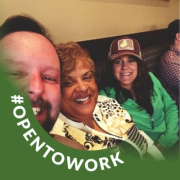![i-SIEM [EOL] Logo](https://images.peerspot.com/image/upload/c_scale,dpr_3.0,f_auto,q_100,w_64/1n8rehhnj5whg5rso78w2pq8ws0r.jpg)

i-SIEM EOL and Netsurion compete in the cybersecurity space. Netsurion holds an advantage with its extensive feature set and deployment support, appealing to those seeking comprehensive capabilities.
Features: i-SIEM EOL offers customizable alerts, system integration, and responsive interface. Netsurion provides advanced threat detection, real-time analytics, and enhanced security coverage.
Ease of Deployment and Customer Service: i-SIEM EOL has a simple deployment process and responsive customer service. Netsurion provides a seamless deployment experience with extensive support services.
Pricing and ROI: i-SIEM EOL offers competitive pricing with moderate ROI. Netsurion requires a higher upfront investment, delivering superior value with its features, offering better cost-to-value ratio.


| Company Size | Count |
|---|---|
| Small Business | 10 |
| Midsize Enterprise | 7 |
| Large Enterprise | 7 |
i-SIEM [EOL] delivers comprehensive monitoring and threat detection capabilities suitable for today's security challenges. It integrates with existing systems, enabling efficient threat analysis and response for knowledgeable users.
i-SIEM [EOL] offers advanced security analytics and seamless integration with security infrastructure, making it a favored choice among technology professionals. Its intuitive design caters to efficient threat management. Users appreciate its capability to process large data volumes for timely threat detection and remediation. The platform ensures effective incident response through automated processes, assisting professionals in maintaining robust security postures.
What are the key features of i-SIEM [EOL]?i-SIEM [EOL] is implemented across industries like finance, healthcare, and manufacturing, where security and compliance are critical. Its flexibility in handling specific industry requirements makes it suitable for enhancing security postures and operational efficiency.
Netsurion offers a comprehensive solution for centralized log management, SIEM, and managed services, ensuring continuous monitoring and security event analysis for diverse organizations, enhancing IT security and compliance.
Netsurion centralizes event management through SIEM and managed services. Organizations leverage it for vulnerability assessment and intrusion detection, integrating logs from Windows, Linux, and network devices. Its SOC provides 24/7 monitoring, ensuring compliance with PCI and audit standards. Real-time alerts and efficient log data aggregation enhance threat identification and response. Weekly reports and insights into user lockouts contribute to robust security management, beneficial for firms with constrained resources.
What are some key features of Netsurion?Netsurion is implemented across industries like finance, healthcare, and retail, where security is crucial. These sectors require robust monitoring and compliance solutions, utilizing Netsurion's seamless integration with their existing infrastructure to manage security operations effectively, addressing both regulatory needs and threat management.
We monitor all Security Information and Event Management (SIEM) reviews to prevent fraudulent reviews and keep review quality high. We do not post reviews by company employees or direct competitors. We validate each review for authenticity via cross-reference with LinkedIn, and personal follow-up with the reviewer when necessary.